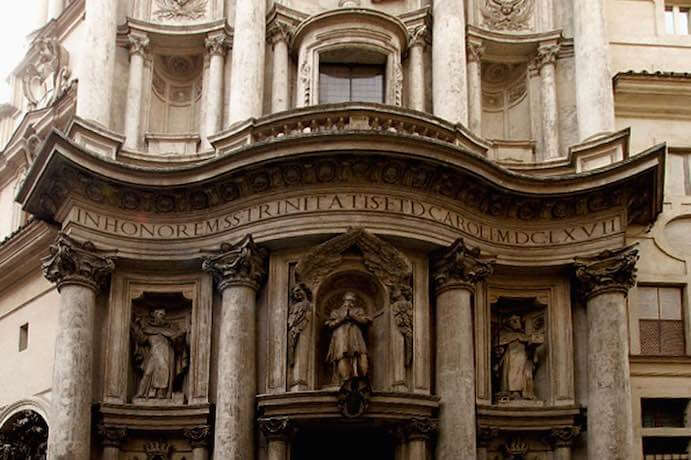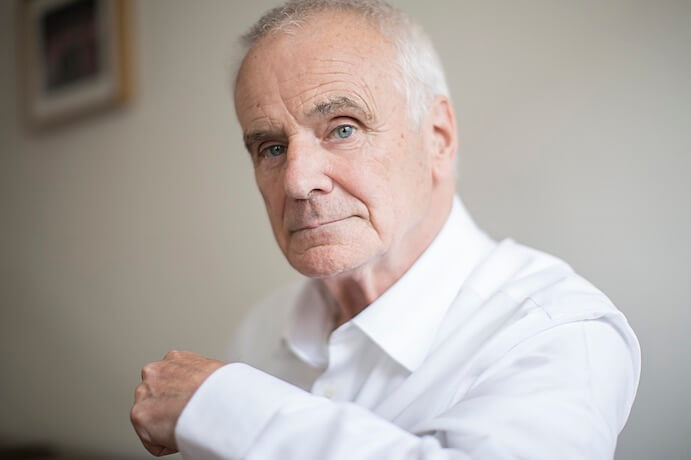On March 14, 2016, I was sitting in my studio listening to Peter Maxwell Davies’ 10th and final symphony when I heard the sad news that this innovative and outspoken musician died at the age of 81 after a long battle with Leukemia. The British composer was well known for integrating disparate musical styles and genres, which has not always been well-received. The world premiere of his work Worldes Blis caused a mass walkout at the BBC proms, and the composer mentioned in interviews that most people who stayed for the duration of the performance booed repeatedly. Still, he was a man of fierce convictions, and was knighted in the 1980’s before being named as the Queen’s Master of Music, a prestigious title equal to being a Poet Laureate.
Completed in 2013, this symphony is also known as Alla ricera di Borromini, which can be translated as “Finding Borromini.” Francesco Borromini was a celebrated Italian architect in the 17th century, with a distinct style that did not have a widespread influence. Sir Peter Maxwell Davies composed his 10th symphony to be evocative of Borromini’s architectural achievements and how they must have looked amidst a bare and simplistic cityscape.

Francesco Borromini’s San Carlo alle Quattro Fontane
The symphony came into being as a result of a joint commission from the London Symphony, the Saint Cecelia Orchestra, and the Tchaikovsky Symphony Orchestra. He wrote a great deal of this four part symphony while undergoing treatment for Leukemia, knowing that he might not survive to see its completion. Traditionally scored with four movements: Adagio, Allegro, Presto, and Adagio, the symphony also contains a full choir and soloists, with text from anonymous sonnets about Borromini and text that Borromini wrote himself about his approach to architecture.
This album, recorded in 2014 on LSO Live, is exquisitely performed by the London Symphony and chorus, and conducted by Sir Antonio Pappano, who is the musical director at the Royal Opera House. This recording is the world premiere of this work, and represents a great deal of research, work, and experience from Peter Maxwell Davies.
As you may expect, a symphony with a strong architectural foundation is rife with vibrant and penetrating percussion. As the symphony builds in the first and second movements, the percussion section is hard at work, painting visuals of painstaking and hard-won 17th century buildings. Borromini’s tempestuous emotions punch through the strings and brass as Davies tells the story of this troubled yet gifted architect. Davies included a quotation from the opera Il Sant’Alessio, an opera which was premiered in Rome during the time that Borromini lived and worked there.

Peter Maxwell Davies
The third movement showcases a yearning piccolo coda with two canons. The second canon is an inversion of the first, and provides an imaginative departure from the rest of the work. In the final movement of the symphony, Davies set text that Borromini wrote mere hours after his suicide attempt. The text is a window to the artist’s soul, and the music accurately depicts the confusion, torment, and desperation of depression that causes one to take their own life. It provides one last look into Borromini’s life and love of building before the final notes descend.
Davies said, “I feel like I’m building a church in music,” and that he did. This symphony is a heartbreaking glimpse into mortality and the frailty of the human condition, written by a man who was watching his life wind to a close.





















